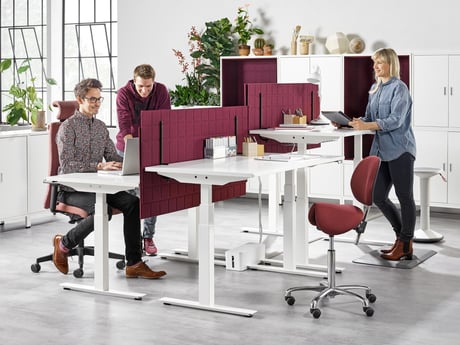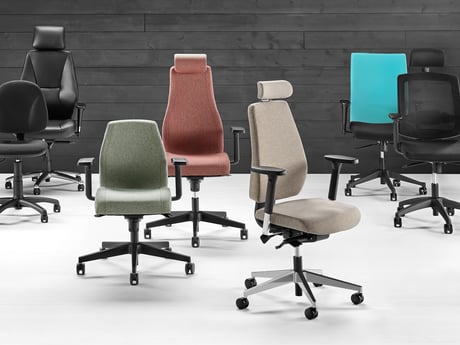Why lunch breaks are good for business

In the UK, the average worker takes just 34 minutes for their lunch break while 52% of us don’t take a break at all, according to research from Workthere ¹.
Many people feel under pressure to work through their lunch break or worry that they will look unproductive if they take time away from their desk. Today’s 24 hour work culture has perpetuated the myth the workers must be constantly available to be considered dedicated to their job ².
Workers who don’t take a break are less productive
However, research shows that taking a break from work actually boosts productivity by letting your brain take a "rest" from challenging tasks. It also gives you a chance to destress and recharge your batteries.
"Taking a break from cognitively taxing work improves creative thinking and everybody’s job has a creative component, such as problem-solving, managing teams or finding creative solutions." says Kimberly Elsbach, professor of management at the Graduate School of Management at the University of California at Davis ².
What can you do as a business?
Make lunch part of the company culture
Create a company culture that encourages staff to take their lunch break. Make sure you have a space that employees can go to relax. Think about whether you can set up a few different social spaces so that employees can choose depending on their mood and what type of day they’re having: a canteen for socialising and eating, a quiet area for reading or meditating, and perhaps even a games room!
Get management involved
Implement the change from the top down. If employees see managers taking time out for lunch then they feel that it’s more acceptable for them to do the same. Lunch is also a good opportunity for different levels of staff to mingle. Often, senior staff also have the most stressful jobs so they will benefit as much as anyone from taking a break.
Create a pleasant canteen
A company canteen can help workers feel ok about taking time out to eat; it also encourages staff to get together in a more social setting, which does wonders for employee relations and company morale! Make sure the canteen has plenty of tables and chairs so staff aren’t scrambling for seats, a pleasant and fun atmosphere (hint: colourful canteen furniture is an easy way to achieve this), lots of windows for natural light and healthy food options.
Make the most of any outdoor space
36% of workers questioned for the Workthere survey said that access to outdoor space during their lunch hour would boost their productivity ¹. Do you have any outdoor space? If you do, then setting up picnic benches or patio furniture gives your employees a place to make the most of nature. Kimberly Elsbach says that "for creative thinking, one of the most restorative environments is a natural environment" ².
Organise lunchtime activities
Organise activities that will encourage people to get up and get out on their lunch break. You could do this simply by creating a forum for employees to get in touch with likeminded colleagues and making suggestions for midday activities such as lunch at a nearby restaurant, a leisurely walk or even a run for the more hardcore members of the team! Creating a community around lunch makes everyone see it as more acceptable.
Although it may seem counterintuitive, your business will benefit from more employees taking their full lunch break in the long run. A more rested and relaxed team is a more productive and creative team. Invest in breakout and canteen furniture, encourage people to take time away from their desks and welcome the change in company culture!
Sources
- Franklin, N. (2017) "Average UK worker takes just half an hour for lunch each day" Workplace Insight [online] http://workplaceinsight.net/average-uk-worker-takes-just-half-an-hour-for-lunch-each-day/ [accessed June 2018]
- Kreiger, E. (2015) "You may look more productive skipping lunch, or eating at your desk. But you aren’t." The Washington Post [online] https://www.washingtonpost.com/lifestyle/wellness/take-a-lunch-break-to-do-better-work/2015/11/05/0a33869e-8275-11e5-a7ca-6ab6ec20f839_story.html [accessed June 2018]



